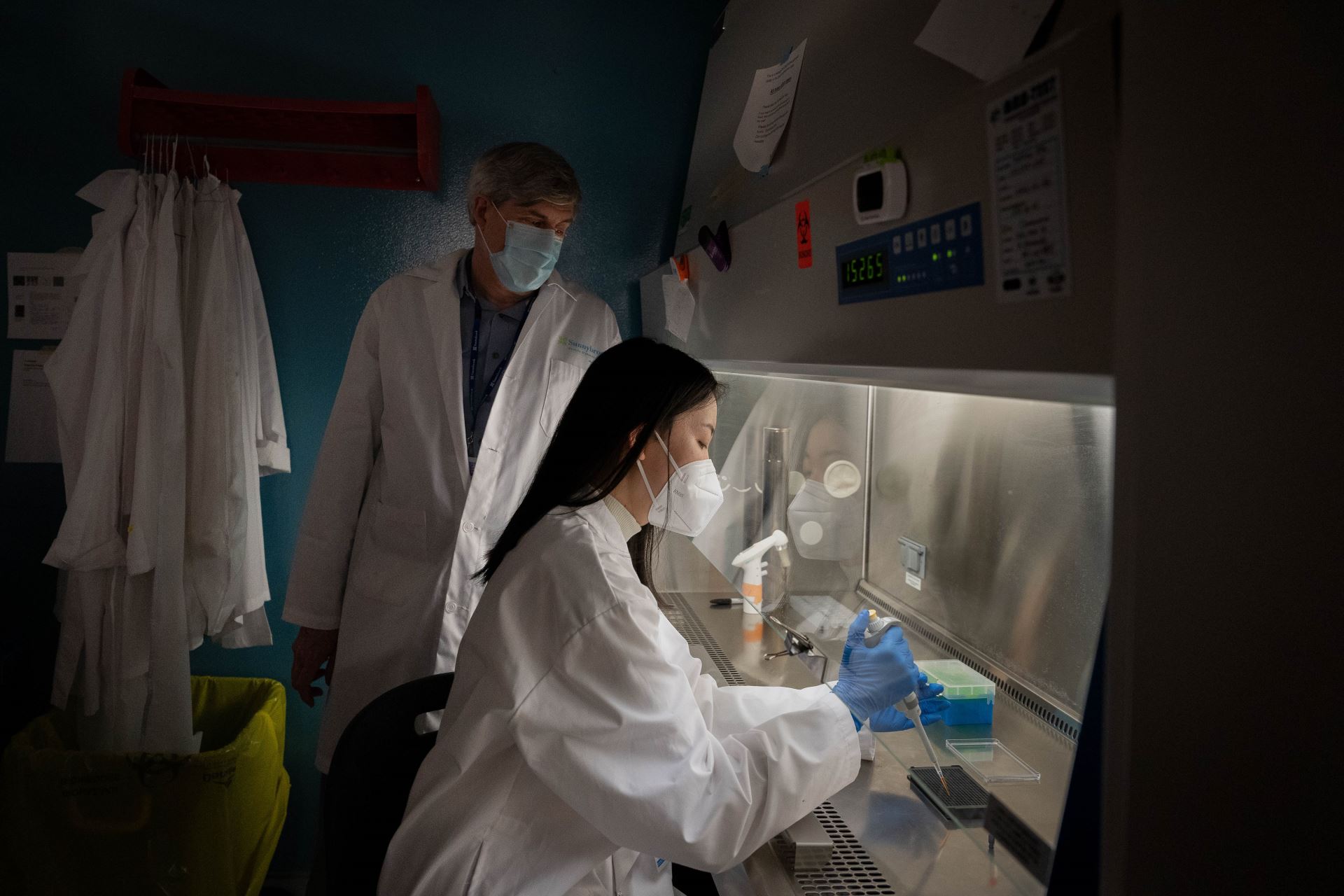Sunnybrook-made dyes poised to accelerate live-cell research
For scientists around the world who are studying the microscopic effects of drug compounds on living cells, visibility just got a lot easier and clearer. This is thanks to new imaging dyes developed by Dr. David Andrews and his research group at Sunnybrook Research Institute (SRI). SRI recently signed a worldwide licensing agreement with Saguaro Technologies Inc. in Quebec City to bring the dyes to the global marketplace.
“These dyes will be used for early-stage drug discovery, drug screening, and precision medicine, particularly in the field of cancer,” says Dr. Andrews, Senior Scientist and Director of Biological Sciences at SRI, who has been working on the dyes for 12 years. “I am happy they are being commercialized, so more investigators will have access to them.”
The dyes, being marketed as ChromaLive™, supersede shortcomings of previous dyes used in lab research such as incompatibility with cells over time and the need for scientists to wash away excess dye that doesn’t enter cells. “Our dyes are non-toxic. They are also only fluorescent when incorporated into the cell’s membranes so there’s no need for a washing step,” says Dr. Andrews.
The dyes are used with sophisticated image processing systems. Artificial intelligence (AI) is utilized to train computers to recognize what specific changes in colour or colour intensity mean in terms of the molecular workings of the cells. “Is the cell having a stress response? Is it alive? Is it in quiescence? Is it dying? The dyes tell us,” says Dr. Andrews.
In a recent example of how the dyes are used, Dr. Andrews’ team discovered by applying the dyes to certain cells from a type of cancer called chronic lymphocytic leukemia (CLL), that there are six kinds of patient cells, potentially representing six different patient cohorts. From there, research indicates that in one of the cohorts, a targeted chemotherapy results in a stress response, but when used with a new drug currently in clinical trials, the combination kills cancer cells very effectively. “These are important steps toward personalized medicine,” says Dr. Andrews.
He is grateful for an unrestricted Canadian Institutes of Health Research (CIHR) Foundation grant, which allowed his group to do this experimental “high risk, high gain” research. Dr. Andrews team screened 50,000 compounds before they found one that was promising enough to develop further.
For its part, Saguaro will now take the dyes to the marketplace. “Our plan is to reach more drug discovery scientists in pharmaceutical companies and in academic settings, who screen thousands of compounds for their therapeutic potential,” says Félix Lavoie-Pérusse, Co-Founder and Chief Commercial Officer of Saguaro. “Ultimately, we want to help them find new therapies for improved human health.”










